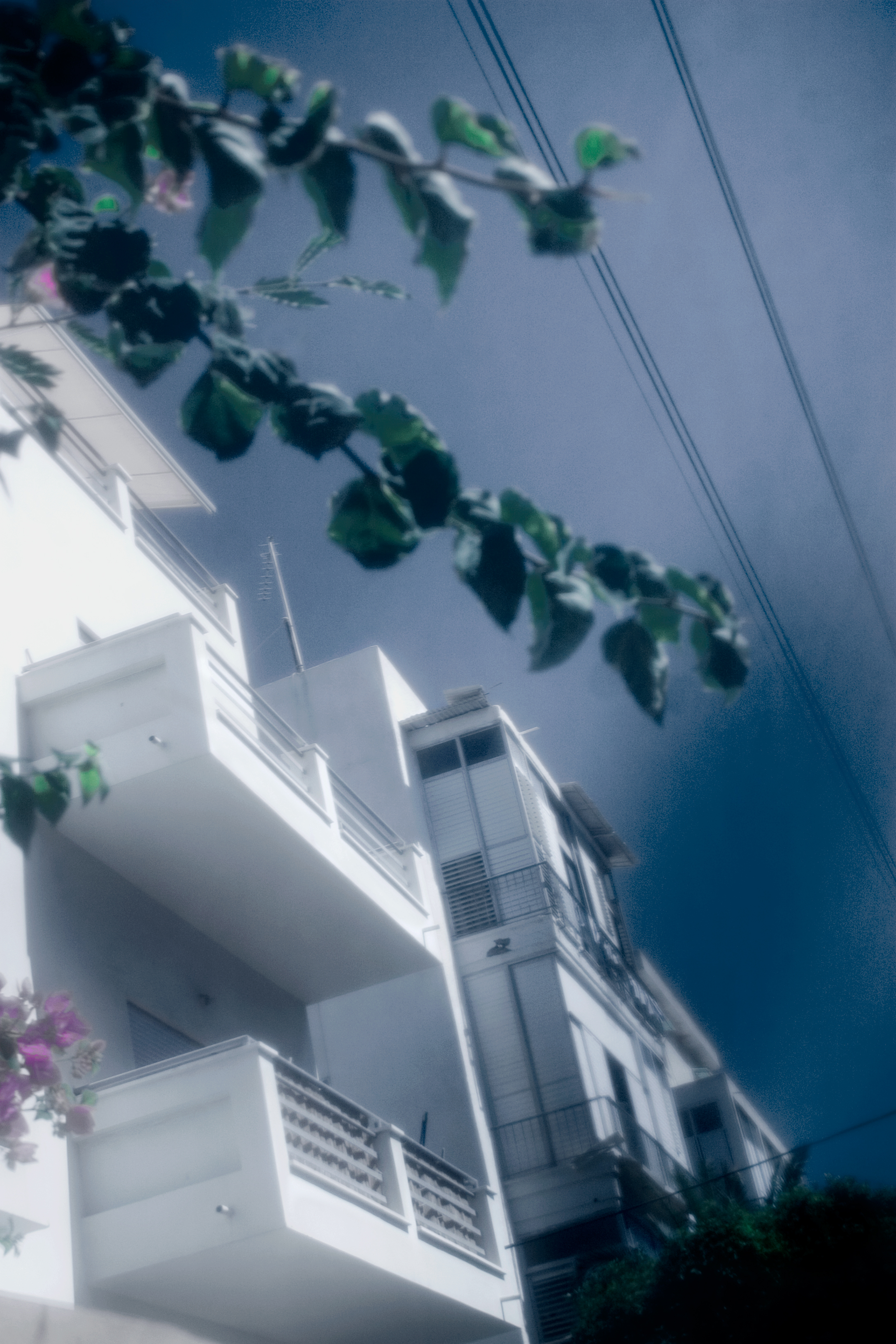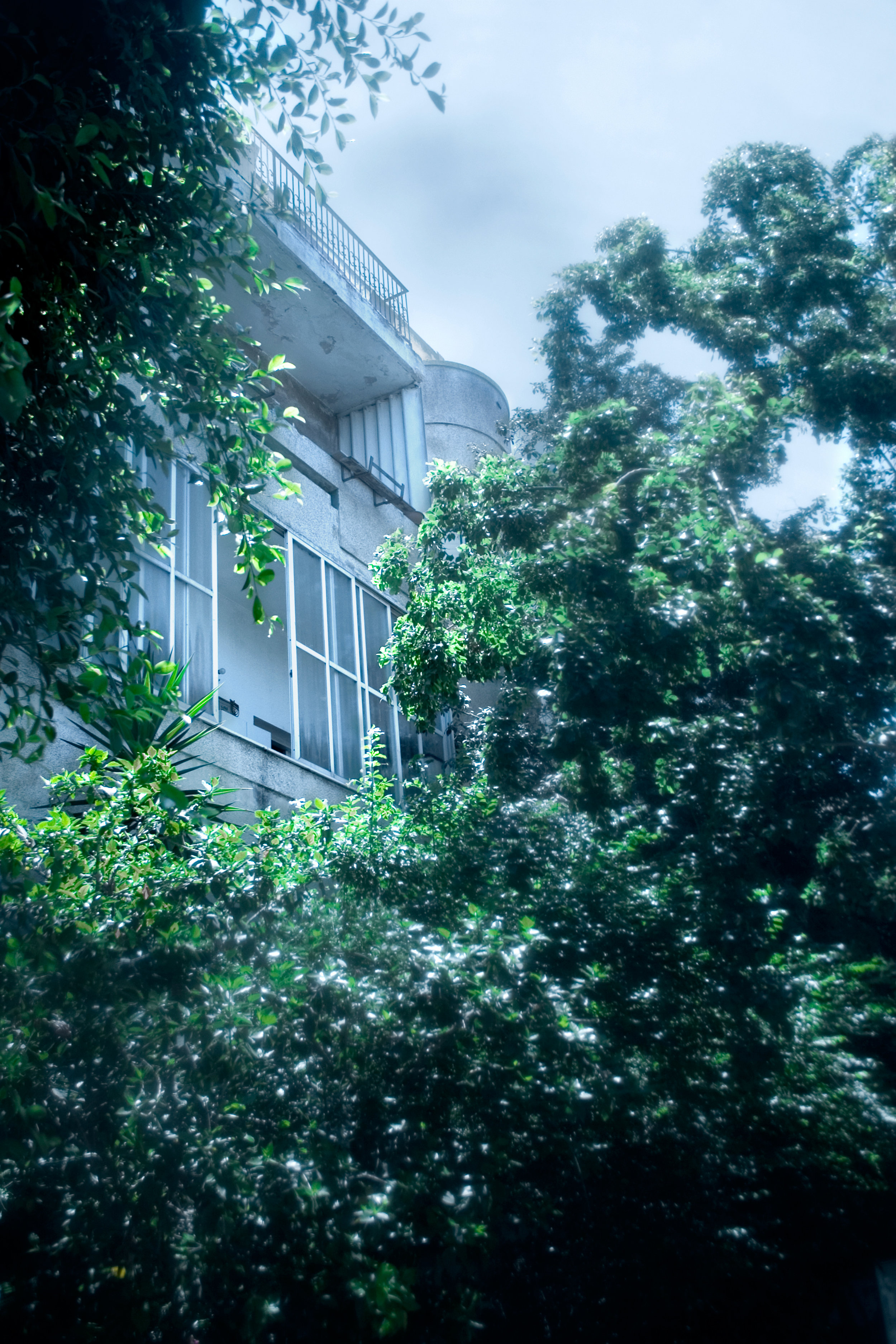Colors of the White City by Carol Bishop
In 1911, the Jewish community chose a desert environment located north of Jaffa on the edge of the Mediterranean to build an ideal city. The planners wanted the city, and most importantly the architecture, to stand as a symbol of newness, progress and hope. For the Israeli architects it meant rejecting the styles of older European buildings as well as the desert structures of Palestine. Many of those architects had trained at the Bauhaus in Germany and were strongly influenced by the work of Le Corbusier. When it came to choosing an architectural style, Tel Aviv would be created in the International Style. By the 1930’s, Tel Aviv was home to over 4,000 works of Modern architecture.
The International Style came with very specific conventions: the expression of volume rather than mass, balance rather than preconceived symmetry, and without exception, the expulsion of applied ornament. * This canon produced white, box-like structures admired for their functionality, simplicity and purity. But the rules would prove to be problematic for Tel Aviv: architects had to cope with two defining elements rarely encountered in European cities – the intense heat and blazing sunlight. As a result, the architects modified, adapted and often times ignored the strict design conventions of Modernism. While keeping the white stucco exteriors, they added high columns to push structures upward, leaving space below the buildings for cool wind flows and flourishing gardens. They added spacious front porches to serve as airy outdoor meeting areas where residents could view the city sidewalks and connect with their neighbors. Buildings and balconies often ended with curved corners, replacing the hard edges of Bauhaus architecture. They punctured walls with multiple windows and, contrary to Bauhaus rules, decorated them with leaded glass. And the addition of large brise soleils (sun breakers) over windows and terraces created exaggerated masses protruding from the exterior walls. These added features and ornamentations made Tel Aviv’s International Style not only unique, but also provided an invitation for the sunshine to transform the white buildings into a kaleidoscope of subtle hues.
When I first visited Tel Aviv, I was astonished to witness the White City manifest itself as a luminous sculpture whose chromatic skin transforms with the changing light. Bathed in early morning shades of translucent yellows, tasty oranges, and sunset pinks, the city’s geometry shape-shifts into a glowing light show. As twilight falls the neutralized sky droops over and across the architecture heightening the intensity of the wall planes and the verdant green foliage. Shortly afterwards, night’s darkness cloaks the buildings in a charcoal cover, eliminating the edges of buildings and condensing forms into geometric patterns of illuminated windows. But most intriguing is the daylight palette when the architecture’s color is determined by the intensity and position of the daytime sun whose reflective brush paints a scrim across the city, bathing the structures in soft azure tints and violet shadows. Under a deep cobalt sky and next to a sapphire sea, the solar rays bend and break over the push and pull of the architectural elements; the added decorations-the porches, the brise soleils, the gardens-all become light catchers and shadow boxes.
In old black and white photographs the freshly painted white buildings appear as glowing ribbons stretched across the bright desert landscape. But today the architecture no longer reads as pure white. The remnants of the original concrete and stucco, covered with generations of built-up paint have deteriorated into peeling shells of multi-colored pigments; the rough cracks and encrusted patinas absorb and echo saturated reflections. What’s more, the passage of time and the complexity of contemporary urban life have brought about other changes. Eighty years of battling the heat with lush landscaping has produced envelopes of green screens around, in front of, and below the buildings. Additional stories have been layered one on top of another adding higher vertical windows that serve as sky mirrors. Renovated buildings, once again bleached and shimmering flash their light blue tints in poetic rhythms between those places still in need of restoration. Even in areas where newer architecture has replaced older buildings and unruly signage and high density has increased, the results have intensified the colors of the existing surfaces. All in all, the city has become an exhilarating playground marrying pigments with rich shadows and lights.
While the UNESCO World Heritage Centre declared Tel Aviv as the “White City”, the nuances of the polychrome hues shifting and moving across its architecture challenge that title and contribute to her beauty. While a city’s culture and history are the defining keys to its energy and spirit, the unexpected colors of the White City add both an aesthetic and emotional content to her distinctive character.
*Henry Russell-Hitchcock and Philip Johnson, for the 1932 MOMA exhibition, International Style; Architecture since 1922, Exhibition notes.









